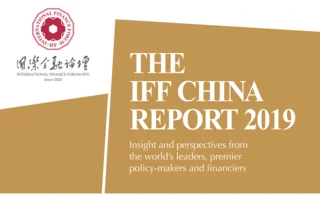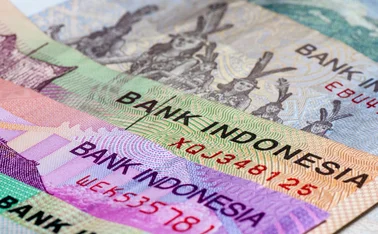
An open door to reform


Finance exists in two dimensions: micro and macro. Macro refers to demand, currency, credit and foreign exchange policy, all of which influence economic growth and the price of commodities. Micro means financial resource allocation, or the supply side. Through the policy of ‘opening-up’, China aims to balance supply and demand by reforming financial institutions, monetary control and forex management systems, designing a new financial market, and advancing the liberalisation of the financial industry.
The Chinese financial experience
Forex markets, capital markets, financial instruments and money markets have a similar basic structure wherever they are in the world. But the way in which they operate and the structure of financial institutions differs in China because of the system they have been built around.

In 1978, at the Third Plenary Session of the 11th Central Committee of the Communist Party of China, the decision was taken to reform China’s financial markets. In 1979, China moved away from a mono-banking economy, established the Agricultural Bank, the Bank of China and the China Construction Bank, and gradually set up regional joint-stock commercial banks and other types of financial institutions. By 1984, with the creation of the Industrial and Commercial Bank of China, which was tasked with financing the business activities of the state-owned enterprises, the People’s Bank of China began to establish itself as the country’s core regulator and central bank.
In 1987, the operation mechanism of China’s commodity-
reliant economy was established, with the state controlling the market and the market guiding enterprise. In 1993, reform was accelerated to ensure that, by the end of the 20th century, China would have a fully fledged socialist economic system. Later that year, plans were set in motion to grant the central bank various macro tools and define the different functions of policy banks and commercial banks to form a more diverse and multilayered financial system.
Despite significant progress, China’s financial industry is still prone to corporate governance issues. Soft budget constraints date back to the primary stage of reform and haven’t changed significantly since. Some large institutions are systemically important and are unable to shoulder the responsibility when severe problems arise, while governments, regulatory authorities and central banks must weigh in to protect them.
In 1993, China began market-based interest rate reform. In 1996, it began to liberalise the interbank lending rate, and in 2000 adopted the creed of “large long-term deposit first, small short-term deposit after; foreign currency first, domestic currency after”. Prices could now fully guide resource allocation, but only when the market could afford both profit and loss. However, the behaviour of financial institutions remains a problem. Ideally, net income should provide a buffer for banks when risks emerge, allowing instutitions to continue absorbing deposits and continue lending – if not, interbank lending comes into play. Thus, banks support the economy more during economic busts than booms.
Openness is crucial
Openness will stimulate reform. When the three dimensions of openness – the introduction of rules, mechanisms and competition – are established, the reform process can become increasingly standardised.
Banks unable to absorb bad loans start to build up debts. Through the implementation of the various Basel Accords, commercial banks have improved their capacity to deal with financial risks – increased capital requirements ensure the normal operation of a bank’s activities but also protect consumers’ deposits. There are too many cases worldwide of depositors suffering because of commercial banks becoming insolvent because of a lack of capital and excessive financial risk. Avoiding this requires self-restraint, and the capital adequacy ratio helps enforce this. Existing international rules are a good reference point for China, but are yet to be put into practice.
Investment is also crucial to reform, and Chinese banks have called on foreign institutional investors to accelerate reform within the country’s banking industry. Many have since successfully listed outside the country and are examples of openness aiding the reform process. State-owned banks struggled during their transformation from specialised banks to policy banks to conmmercial banks. Since 2004, reform has centred on dealing with bad assets totalling RMB 1 trillion; bad loans only equate to 1.7% of total loans. In 1994, China promulgated the first set of rules regulating the establishment of foreign banks and the administration of foreign-capital financial institutions, and took the first step towards introducing competition into the financial sector.
China’s insurance industry is making up the most ground, having opened up two years prior, in 1992. As a member of the World Trade Organization, China has furthermore abolished regional restrictions on foreign insurance institutions setting up companies.
Resource allocation
Financial reform often entails new regulation to help prevent and control systemic risk. However, what should be the subject of this regulation and how risk should be managed is constantly debated.
In China, the central bank has headed up the financial system since 1979. However, a central bank should be responsible for correcting volatility in financial markets when things go wrong and should not dictate how banks should go about their day‑to‑day business.
Currently, the leverage ratio is the main source of risk. To reduce this, the central bank could implement capital constraints on financial institutions, but financing is required to fuel the economy. To achieve these goals, China must rely on the development of direct financing and equity investment, instead of indirect financing from the banking system.
We need to study in detail how financial markets behave and interact with one another. Innovation may lead to growth, but it can also introduce new risks that are not yet under control. There remains plenty of scope for financial reform, including the reform of financial institutions.
Only users who have a paid subscription or are part of a corporate subscription are able to print or copy content.
To access these options, along with all other subscription benefits, please contact info@centralbanking.com or view our subscription options here: http://subscriptions.centralbanking.com/subscribe
You are currently unable to print this content. Please contact info@centralbanking.com to find out more.
You are currently unable to copy this content. Please contact info@centralbanking.com to find out more.
Copyright Infopro Digital Limited. All rights reserved.
As outlined in our terms and conditions, https://www.infopro-digital.com/terms-and-conditions/subscriptions/ (point 2.4), printing is limited to a single copy.
If you would like to purchase additional rights please email info@centralbanking.com
Copyright Infopro Digital Limited. All rights reserved.
You may share this content using our article tools. As outlined in our terms and conditions, https://www.infopro-digital.com/terms-and-conditions/subscriptions/ (clause 2.4), an Authorised User may only make one copy of the materials for their own personal use. You must also comply with the restrictions in clause 2.5.
If you would like to purchase additional rights please email info@centralbanking.com







